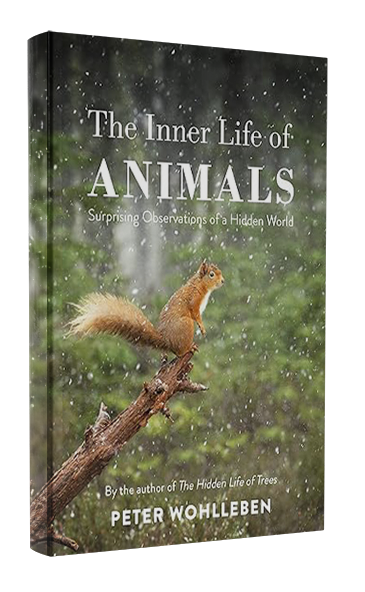Of Strengths and Weaknesses – Be a Spear or Sphere?
ByGV Ravishankar
PublishedSeptember 10, 2024
To be exceptional, we need to spend time working on our strengths. But we have grown up being taught to fix our weaknesses.
I first heard the term “spike” in the context of talent while interviewing at McKinsey. The recruiters would look for people who had some edge. While you meet a lot of good people while recruiting, I learned that exceptional people don’t come perfectly rounded, and I would now even argue that it’s hard to be exceptional if you are too well-rounded. I call this being a spear instead of a sphere. A spear travels faster and further because it has a pointed nose or a sharp wedge. It makes an impact with its sharpness. This is what we now look for in founders, talent or companies—those who don’t just make a dent but can pierce through and be exceptional.
To be exceptional, we need to spend a lot of time working on our strengths and going from good to great. But we have grown up being taught to fix our weaknesses—whether at school, where if you are really good at math, that wasn’t good enough because you had to do better in language, or even at work, where in our appraisals, we are told about our opportunity areas and advised that if only we could communicate better or write reports better, how much of a well-rounded team member we could be. Most people want us to be good spheres.
If you are a company with strong digital marketing capabilities, you may have been advised that maybe some of the spends should be redirected toward building a brand. If you have a great sales engine that’s firing, you may hear people advise you about how there is scope to improve your company culture and create a safer environment. There is always something to improve that isn’t working well, but the path to greatness doesn’t involve merely going from ‘okay’ to ‘good’ in all areas. It comes from going from ‘good’ to ‘great’ in a few key areas that make you exceptional as a company. Be a spear!
In his memoir, The Barefoot Coach, Paddy Upton, mental coach for the Indian cricket team, talks about how Virender Sehwag, one of India’s best opening batsmen, was being advised to improve his defense against the pace bowlers in overseas games. Instead, he decided to double down on his aggressive batting style to find success. In a chapter titled “Playing to Strengths,” Upton speaks about the importance of focusing on your strengths and even argues that spending too much time improving your weaknesses is almost irresponsible! To quote Upton, “If you want to avoid failure and enjoy average levels of success at best, then fix your weakness. If you want to achieve success, build your strengths.”
This is a learning worth applying in both professional and personal life. Unless you face a debilitating disadvantage or a core issue for your role’s success, focussing on weaknesses can lead to only marginal contributions to your progress. Instead, why not spend that time getting better at what you are good at? To become excellent, to be a power player on your team, and to be a leader in your industry.
Let’s understand this with some hypothetical and simplistic mathematics. Say your job needs you to be analytically strong and you are someone who is good analytically and currently rank in the top 20% of your peer group at work. But when it comes to writing reports, let’s say you are in the bottom half (say 40th percentile) and have received feedback that there is scope for improvement.

Now suppose you have one hour a day you can spend improving one skill for a month. You have two choices: either you can spend 30 hours working on improving your report writing or spend the same time seeing if you can improve on your analytical capabilities further, or split the time and improve both marginally. Say for every two hours spent you can move up 1% ahead on the skill you choose to work on. So you can go 15% points higher from top 20% to top 5% in analytical abilities or move from 40th to the 55th% in report writing. Which choice do you think will yield more success in your career? It’s clear you will be valued more as the top 5% of the peer set, and everyone will want you on their project for your analytical skills.
We see this in business as well. The reason a new company succeeds in a market is not because they are just a well-run, undifferentiated company or one that has the most balanced offering in the market with a good combination of product and price. Most often they do one thing really well—their product likely does something way better than some others.
When Apple launched the iPhone it was without a keypad and its ultra-thin MacBook Air was launched without many ports we were used to. These devices were focused on their strengths—a full touch screen or an ultra-portable laptop respectively—they were not trying to be well-rounded; they were clutter-breaking products that doubled down on their key feature. Apple was willing to make trade-offs to have something spectacular in other areas. Startups may have many imperfections, but what the good ones have is a sharp wedge that really opens up the market for them.
This is not to say weaknesses should be ignored. Even the great Sehwag learned how to duck the bouncer so he wouldn’t lose his wicket trying to hook the ball impulsively. That allowed him to score a big 300+ runs in the Test match against South Africa. Weaknesses need to be addressed, especially if they create huge liabilities. You can’t succeed if your weakness is sure to kill you. But once you have achieved hygiene level of competence in those areas, working further on them isn’t likely to make you much better. Instead, that energy is better spent sharpening your strengths.
Does this mean you should go all out on your strength all the time? What are the implications of overusing one’s superpower? We will address this in a future newsletter. But I will leave you with a rather funny anecdote that Sourav Ganguly narrates in this video about Sehwag and what he learned about leadership from that experience. Until we meet again, maybe you want to consider taking one hour a day to sharpen your strengths as an individual or as a startup investing more behind your superpower!
“There is always something to improve that isn’t working well, but the path to greatness doesn’t involve merely going from ‘okay’ to ‘good’ in all areas. It comes from going from ‘good’ to ‘great’ in a few key areas that make you exceptional as a company.”
Recommended Reads
Three articles I found interesting:
- In this article on what animals feel, Frans de Waal, a prominent primatologist, talks about how emotions may be more common in the animal world than we would assume. From primates to rodents, it looks like animals feel and express emotions. Some of us as pet owners may relate to this more easily but the author argues we are as emotional as animals despite our desire to see ourselves as rational.
- Often, we seek order in a world that is inherently random. But in the world of cybersecurity, sometimes one wants real randomness as input to design encryption technologies that are safe from hackers. Here is an article that talks about how Cloudflare derives its random inputs from a wall of lava lamps.
- If you are a cricket fan, you will find this article on Rahul Dravid’s journey as India’s coach worth a read. Despite challenges and near losses, Dravid’s tenure culminated in India’s T20 World Cup win in 2024.
If you have time for longer reads:

The Inner Life of Animals: Surprising Observations of a Hidden World
by Peter Wohlleben
This is a deeper read by Peter Wohlleben (an author whose work I have recommended before) on animals and how they are emotional beings. The Inner Life of Animals explores the emotional and cognitive world of animals, revealing how they experience joy, fear, love, and grief. Drawing from scientific research and personal observations, Wohlleben challenges the belief that animals are purely instinct-driven, instead showcasing their intelligence and emotional depth.

VC – An American History by Tom Nicholas
VC: An American History by Tom Nicholas traces the origins and development of venture capital (VC) in the U.S., showing how it has evolved from a niche practice in the early 20th century to a major driver of innovation in Silicon Valley. Several interesting anecdotes, including Sequoia Capital’s $200k investment in Apple and the exit before IPO for 30x returns, and the birth of Genentech from someone who was asked to leave Kleiner Perkins, make this book an engaging read and reminds us of how difficult this business actually is.
Do write in at gv@peakxv.com if my interests intersect with yours! Click here to read more articles on Peak XV’s blog. For more editions of Connecting the Dots, click here. I’m also on LinkedIn and Twitter.